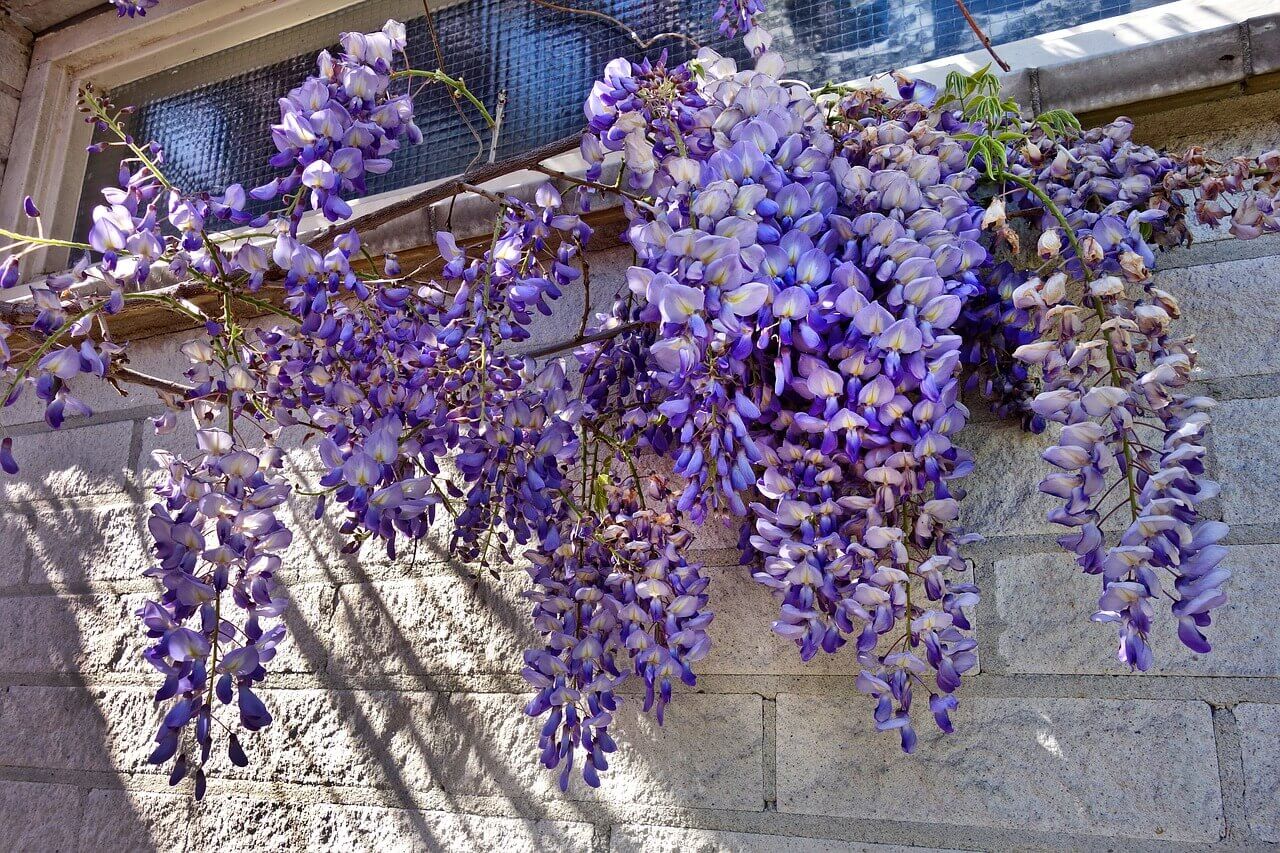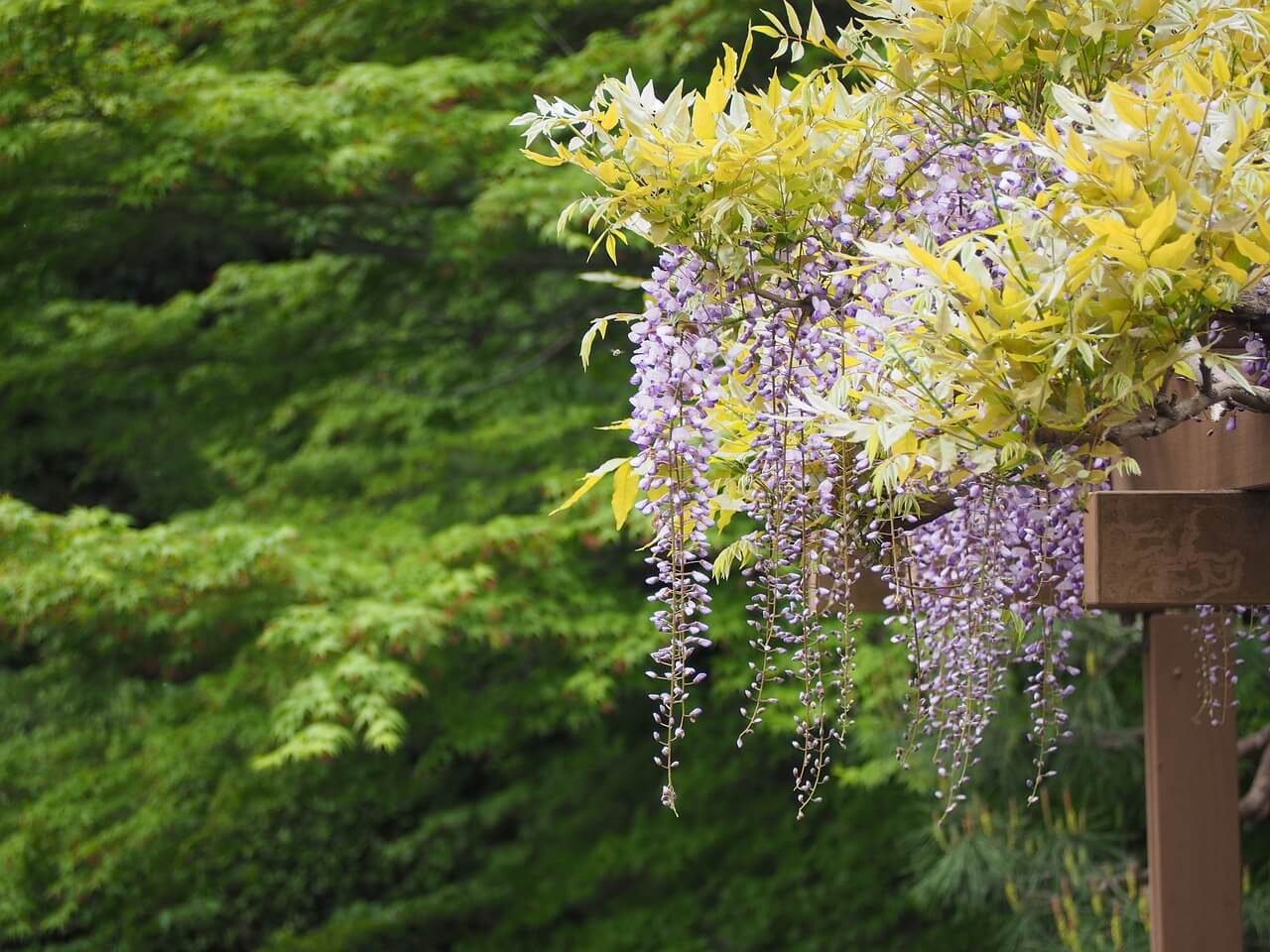Wisteria is a hardy vining plant that takes off quickly once it’s established. As long as you follow a few basic care requirements, you’ll be rewarded with beautiful, fragrant flowers. In this article, we’ll discuss how to grow wisteria, from collecting seeds to putting them in the ground.
What You'll Learn Today
Where Does Wisteria Grow?

There are several different varieties of wisteria. The location that they grow best in depends on the type of wisteria. Some of the different varieties include:
- American Wisteria: Wisteria frutescens is native to many states in the U.S., such as Virginia, Texas, Florida, and up through New York, Iowa, and Michigan. American wisteria grows in zones 5-9.
- Kentucky Wisteria: Wisteria macrostachya originated in the southeast of the U.S., and grows in hardiness zones 4-9.
- Blue Moon: This is another type of Kentucky wisteria that is known for being extra hardy, withstanding temperatures as low as -40 degrees Fahrenheit.
- Chinese & Japanese Wisteria: These varieties can grow in zones 5-9 in the U.S. Since they are not native to our country and are considered invasive, it is not recommended to plant them in your garden.
No matter which variety you have, it’s important to plant wisteria in a bright, sunny spot. To reach its full potential and produce the most blooms, it needs at least 6 hours of sunlight per day.
How To Grow Wisteria From Seed?

If you’re planning on starting wisteria from seed, get ready to embark on a long journey. Wisteria takes anywhere from 10-20 to grow from seed to its first bloom. If you just bought a house or are switching up the landscape in your forever home, it’s a wonderfully rewarding long-term process.
Before you plant the seed, you’ll need to do some prep work. If you’re collecting and germinating your seeds, start here:
Step 1: Collect Seed Pods
Seed pods grow and are ready to harvest in the fall. Much like pea pods, wisteria seed pods hang down from the plant’s vines.
Once the seed pods mature and dry out in October. You’ll need to get them before they burst and fall off the tree to self-seed.
To see if they’re ready to collect, gently shake a seed pod that’s still attached to the vine. If the seeds rattle inside, you can remove the pod. Before you handle any pods or seeds, wear gloves, since they are toxic.
Step 2: Remove the Seeds
Twist the seed pods until they break open and remove the seeds. You can either save them in a sealed envelope until spring or plant them now.
Step 3: Begin the Germination Process
To help the seeds germinate (break out of the seed shell and start sprouting), soak them in warm water overnight. This helps to soften the shell and hydrate the seeds.
Step 4: Sow the Seeds
Many gardeners prefer to start their seeds in seed trays. But wisteria seedlings tend to grow quickly, so you may want to sow the seeds in their own 3-inch pots to give them some extra space.
Regardless of the container, select a seed-starting potting mix to fill the pots with. Next, moisten the soil before you put the seeds in.
Poke a small hole about 1.4 of an inch deep in the center of the container. Plant 1 or 2 seeds in the hole, and cover them up.
Step 5: Transplant the Seeds
Once the seeds are in their containers, they need to be kept moist, warm, and in bright light. Try to place them in a southern-facing window that won’t get much colder than 60 degrees Fahrenheit.
You can expect viable seeds to sprout within about a month, sometimes less. When the seedlings are at least 4 inches tall, you can plant them in the ground.
To see what the seeds will look like when they sprout, check out this YouTube video:
How To Plant Wisteria?
Whether you plant your wisteria seedlings in the fall or spring depends on when you collected the seeds. Seedlings are fragile at first and need at least 45 days of frost-free weather to establish before the winter.
Depending on where you live, this means it could be tricky to plant in the fall if you collected your own seeds. If you collect seeds in October in the northeast, for example, it will be too cold once the seedlings are ready to plant.
Once it’s safe to plant, find an area that gets full sun (at least 6 hours per day). The soil should be well-draining.
Wisteria is a climbing plant, so plant with this in mind. Decide where you want it to climb – whether it’s a trellis, fence, or wall.
When planting wisteria seedlings, dig a small hole that’s a little larger than the sprout, and place the roots just below the surface of the soil. If you’re planting a mature plant, dig a hole as deep as the root ball and 2-3 times wider.
When planting multiple wisteria plants, make sure they are spaced at least 10 feet apart.
How To Grow Wisteria From Cuttings
Growing wisteria from cuttings is a good way to shorten the length of the long growing process. The best time to take your cutting is in June or July when the parent plant has part of the growing season under its belt.
Here’s how to propagate wisteria from cuttings:
- Cut a section of green vine that’s at least 6 inches long and contains more than 2 sets of leaves.
- Remove the bottom set of leaves from the cutting – this is where roots will form.
- Trim the stem so that the nodes are less than an inch from the bottom.
- Place the cutting in a rooting medium such as vermiculite or pre-moistened, well-draining potting mix.
- Place the container in bright, indirect light, and keep the soil consistently moist.
- After 4-6 weeks, you should have some roots growing.
- Once the roots are several inches long, you can plant them in the ground. This could take many months.
How Fast Does Wisteria Grow?

While it takes many years for wisteria to bloom after growing it from seed, it grows very quickly. Many gardeners see their wisteria grow at least 10 feet in just one growing season.
Along with being fast growers, this plant can climb pretty high. American wisteria grows up to 20-30 feet long, while Kentucky wisteria grows around 15-25 feet long.
Some homeowners decide against growing wisteria due to this vigorous growth. Wisteria needs to be trained and given appropriate structures to climb.
If left to its own devices, wisteria can grow on pipes and into windows, causing long-term damage. It also can get fairly heavy and has been known to break supports that are not strong enough to support it (unstable trellises, etc.).
Once you successfully sprout your wisteria seedlings or establish your cuttings, you’ll see this beautiful plant take off quickly. When planned properly, wisteria can be a stunning addition to any landscape. If you have the time, patience, and motivation to keep it in check, it will be worth the effort.
My Wisteria is making seed pods that look like peas. Are these edible?
Absolutely not. As tempting as these seed pods look, do not be tempted to eat them, and make sure your children and pets stay away because these are toxic, and can cause all sorts of health problems.